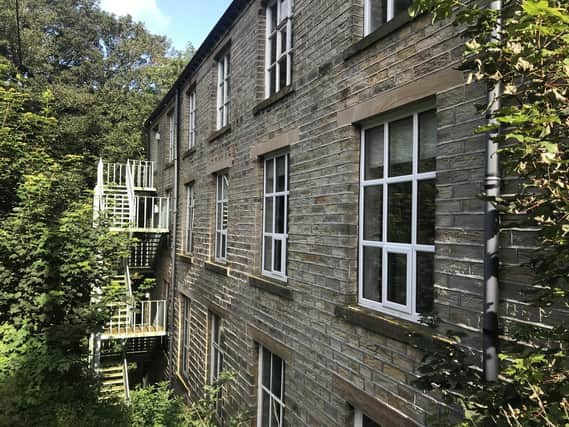More than 230 historic mills in Yorkshire could be turned into homes saving precious green-belt land


Up to 9,000 new homes could be created on brownfield sites in Yorkshire, saving the environment by regenerating historic mill buildings and conserving green-belt land, according to a report by Historic England.
However, there are significant hurdles in the way, say developers. “Cost is the biggest barrier. Typically the build cost is at least 35 per cent more than standard new-build construction,” says Sarah Cawley, sales and marketing manager for Skipton-based Candelisa, which has converted Horace Mills in Cononley, near Keighley, into 51 apartments, plus new-build homes (two apartments remaining, from £175,000) “With conversion work taking much longer, cash flow is harder to manage as monies are tied up until completion, whereas with new-build housing completions can be phased and cash can be recycled.”
Advertisement
Hide AdAdvertisement
Hide AdShe would like to see the Government create more incentives for developers such as removing the Section 106 contributions – the legal agreement binding developers to mitigate the impact of residential schemes on the local community. She said: “Fast-tracking planning applications and offering grants and loans to developers and landowners would certainly assist in making conversion opportunities more attractive.”
Nathan Priestley, founder of Leeds-based Priestley Construction, agrees. He has undertaken a number of mill conversions, including The Conditioning House in Bradford, where 152 apartments have been created in a former woollen mill (buy-to-let apartments available from £95,000) and Green Lane Mill in Holmfirth, turning a watermill into 11 two-bedroom apartments.
He wants Permitted Development rules extended to speed up the process and make it more viable for developers to buy sites and proceed towards conversion into residential or mixed-use. “Planning permission can often take two or three years,” he says. “If there was a system where a developer could apply under Permitted Development it would be a much simpler process. It would be very important to retain listed building consent, so all the historic features of the building are protected.
“But if Permitted Development rules were laid down, we’d all know what we’re working to and the application would be more simplified – just a few forms, as opposed to hundreds and hundreds and then waiting for a decision. It would open up development and save green belt.”
Advertisement
Hide AdAdvertisement
Hide AdEnvironmental benefits are twofold. As the global climate- change summit in Glasgow approaches, there’s huge interest in converting existing buildings. Historic England says by refurbishing historic mills significant carbon emissions associated with demolition and use of materials needed for building new are avoided.
In Leeds, for example, the Hunslet and Victoria flax-spinning mills in Atkinson Street next to the River Aire were originally to be bulldozed but the 1.25-hectare site has been given a new lease of life as Victoria Riverside. The collection of Grade II and II* buildings are being renovated by JM Construction to create 350 one, two and three-bedroom apartments. The initial phases have been completed.
In total, there are 237 vacant and underused mills in our region which could become “wonderful homes, workplaces and cultural spaces”, Historic England believes. “The mills of the north are such an important part of our history, culture and landscape,” says Catherine Dewar, Historic England’s north west regional director.
Rutland Mills, opposite the Hepworth gallery in Wakefield, pioneers this approach. An arts-led regeneration scheme by City and Provincial Properties, it aims to transform the River Calder waterfront with new commercial floor space, food market, spaces for education, music and hotel accommodation.
Advertisement
Hide AdAdvertisement
Hide AdStephen Miles, of Cushman and Wakefield, the firm that undertook the Historic England report, highlights “a surge in the market’s appetite to repurpose textile mills for residential and commercial purposes and this latest work underlines the scale of the opportunity that remains.”
Nathan Priestley says mill conversions attract an interesting demographic of buyers and renters – young professionals and retirees. “At the moment people are attracted to living in a community, with gyms, meeting places and other facilities on site.”
Jason McCartney, Conservative MP for Colne Valley, says he sees the benefits of mill regeneration at first hand in Huddersfield, citing Titanic Mills in Linthwaite, now a spa and apartments, Globe Mill in Slaithwaite, a business centre, and Acre Mills, Lindley, the Outpatients Department for Huddersfield Royal Infirmary
He said: “Regenerated historic textile mills can unlock social and economic benefits for the north by driving the regeneration of whole areas and helping to deliver the Government’s levelling-up agenda.”
Comment Guidelines
National World encourages reader discussion on our stories. User feedback, insights and back-and-forth exchanges add a rich layer of context to reporting. Please review our Community Guidelines before commenting.